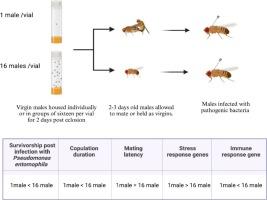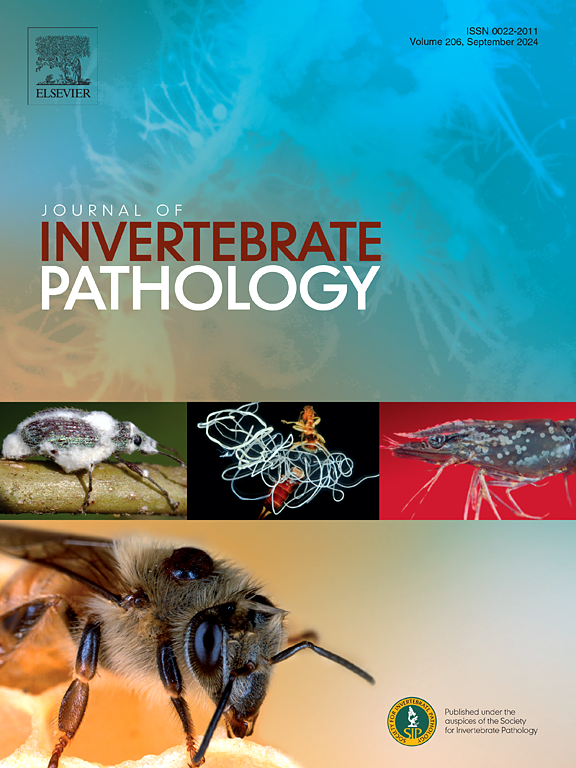Housing density affects the survivorship post infection of Drosophila melanogaster males in a pathogen dependent manner
IF 2.4
3区 生物学
Q1 ZOOLOGY
引用次数: 0
Abstract
The impact of social interaction on physiology and behaviour has been widely studied in social insects, but less so in non-eusocial insects. Group housing can signal higher infection risk and reproductive competition, potentially leading to context-dependent trade-offs between reproductive versus immune investment. In this study, we housed Drosophila melanogaster males singly or in groups of two or sixteen for two days and assessed their post infection survival. We found that singly held males exhibited higher mortality post-infection with Pseudomonas entomophila compared to males housed in groups of sixteen. Males held singly or as pairs did not significantly differ in their mortality. However, there was no difference in mortality between the three groups when the pathogen was Bacillus thuringiensis. Singly held males showed elevated levels of cat1, sod and puc and lower levels of rel, indicating elevated stress levels and lower immunity in them. Environmental factors other than the housing density did not account for the difference in survivorship between singly held and group-held flies post-infection with P. entomophila. We observed no trade-off between reproductive investment and post-infection survivorship. Thus, our results show a complex interplay between social isolation, stress related mechanisms and immune function of a non-eusocial insect.

巢密度对黑腹果蝇雄虫感染后存活率的影响呈病原菌依赖关系。
社会交往对群居昆虫生理和行为的影响已被广泛研究,但对非群居昆虫的研究较少。集体住房可能预示着更高的感染风险和生殖竞争,可能导致在生殖投资与免疫投资之间的权衡取决于具体情况。在这项研究中,我们将雄性黑腹果蝇单独或分成两组或16组饲养两天,并评估它们感染后的存活率。我们发现单独饲养的雄性在感染嗜虫假单胞菌后的死亡率高于16组饲养的雄性。单独饲养或成对饲养的雄性在死亡率上没有显著差异。然而,当病原体为苏云金芽孢杆菌时,三组之间的死亡率没有差异。单独饲养的雄性显示cat1、sod和puc水平升高,而rel水平较低,表明它们的压力水平升高,免疫力较低。除巢密度外的环境因素不能解释单独饲养和群体饲养的蝇类感染Pe后存活率的差异。我们没有观察到生殖投资和感染后生存之间的权衡。因此,我们的研究结果表明,非社会性昆虫的社会隔离、应激相关机制和免疫功能之间存在复杂的相互作用。
本文章由计算机程序翻译,如有差异,请以英文原文为准。
求助全文
约1分钟内获得全文
求助全文
来源期刊
CiteScore
6.10
自引率
5.90%
发文量
94
审稿时长
1 months
期刊介绍:
The Journal of Invertebrate Pathology presents original research articles and notes on the induction and pathogenesis of diseases of invertebrates, including the suppression of diseases in beneficial species, and the use of diseases in controlling undesirable species. In addition, the journal publishes the results of physiological, morphological, genetic, immunological and ecological studies as related to the etiologic agents of diseases of invertebrates.
The Journal of Invertebrate Pathology is the adopted journal of the Society for Invertebrate Pathology, and is available to SIP members at a special reduced price.

 求助内容:
求助内容: 应助结果提醒方式:
应助结果提醒方式:


